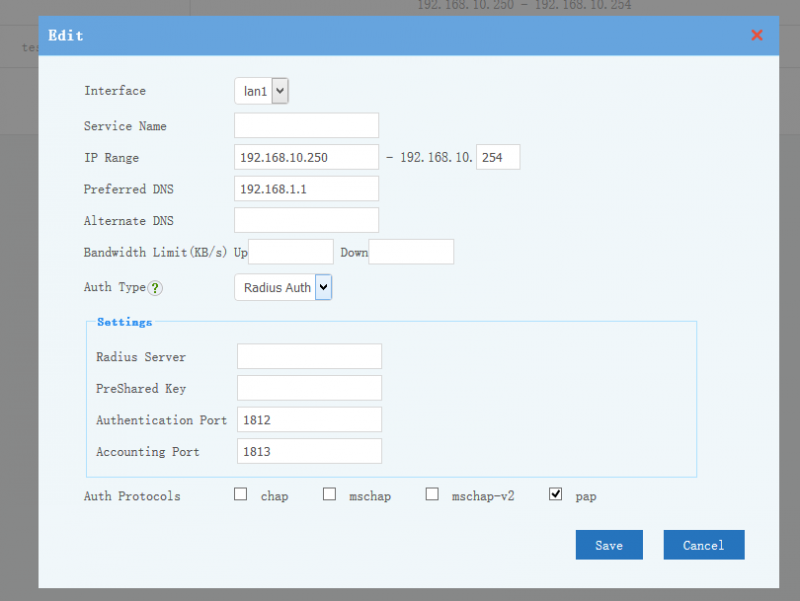Pppoe
From Wiki of WFilter NG Firewall
(Difference between revisions)
(→PPPoE Settings) |
|||
| Line 22: | Line 22: | ||
** For "Email Auth" and "Ldap Auth", only "pap" is supported. | ** For "Email Auth" and "Ldap Auth", only "pap" is supported. | ||
| − | [[File:Faq_en_pppoe001. | + | [[File:Faq_en_pppoe001.png|800px]] |
== FAQ == | == FAQ == | ||
Revision as of 10:22, 23 July 2017
1 PPPoE
PPPoE is to provide a PPPoE service for local network users. With PPPoE, you can:
- Allow clients to connect PPPoE service.
- Show PPPoE clients in the Real-time Bandwidth(IP, MAC, username)
- Record PPPoE clients internet activity(Internet Usage)
- Set access policy for PPPoE clients.(Access_Policy)
2 PPPoE Settings
- Interface: the LAN interface to enable PPPoE.
- Service Name: PPPoE service name. Only required when you have multiple PPPoE services in network.
- IP Range: the assigned IP address range to clients.
- DNS: the assigned DNS to clients.
- Bandwidth Limit: whether to limit clients bandwidth rate. The unit is Kbyte. For each user, you can set bandwidth limit in Local_Account to overwrite the global bandwidth limit.
- Auth Type
- "Local Auth": authenticate with username and password of local accounts. This user shall enable "PPPoE" access in Local_Account.
- "Email Auth": send credentials to a pop/imap email server for authentication.
- "Ldap Auth": send credentials to a ldap server for authentication.
- "Radius Auth": send credentials to a remote radius server for authentication.
- Auth Protocols: supported PPPoE auth protocols, which shall be consistence with PPPoE client settings.
- For "Email Auth" and "Ldap Auth", only "pap" is supported.
